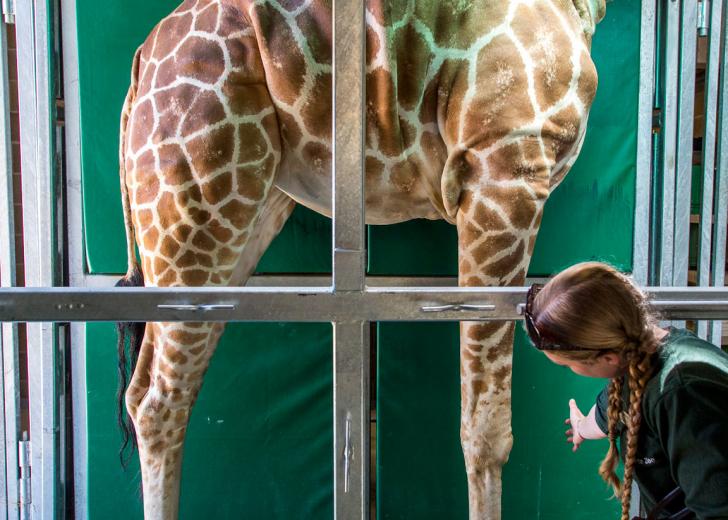
Giraffes at the Sacramento Zoo are trained to assist in their own care. This husbandry-based training teaches the giraffes roughly 20 commands. “They know their body parts, so if I say ‘knee’, she will lift her knee until it touches my hand,” says Melissa McCartney, a zookeeper who focuses on hooved animals. That’s helpful for animals who have arthritis and need help stretching or who need their hooves trimmed.
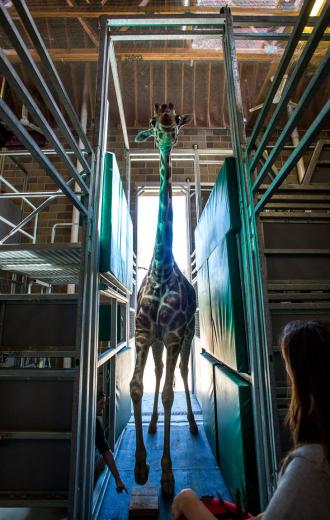
Instead of having to immobilize or restrain an animal, they are taught to come voluntarily when their name is called. “It’s called operant conditioning, and they have the choice. They have the freedom to leave, but they know they will be rewarded for participating,” McCartney says. “Blood samples are valuable, so we teach them just to stand quietly,” she adds. “And because our male is a different giraffe than our females, we have to put the girls on birth control.”
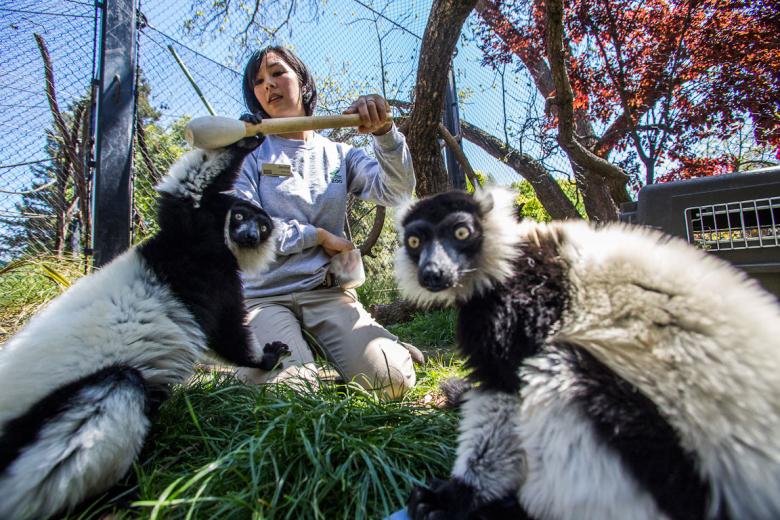
Life in an enclosure doesn’t have to be boring, and it certainly isn’t at the Sacramento Zoo, which is celebrating its 85th Anniversary this summer. Animals need mental stimulation, and lots of it. So zookeepers like Janine Steele, who cares for primates, provide toys, food-and even television- to creatures of all sorts. “Many animals are food motivated, and we try to present their food in different ways-in different containers or balls- so they have to work for it,” Steele says.
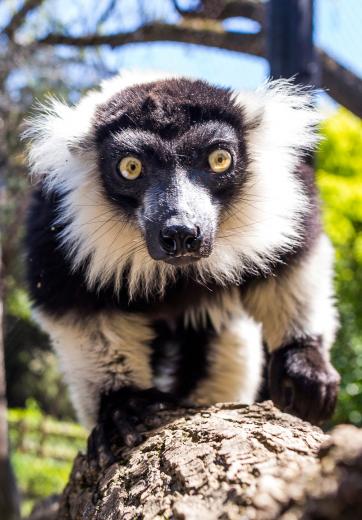
In the wild, animals like this lemur would forage for food. Zookeepers try to simulate that by hanging food from tree limbs, for example. Keepers also rearrange things to provide a change of scenery in the enclosures. Bubble machines, mirrors and wading pools are also offered. On rainy days, the chimps get to watch TV and movies. Says Steele: “There’s one little chimp who just loves Jack Hanna.”
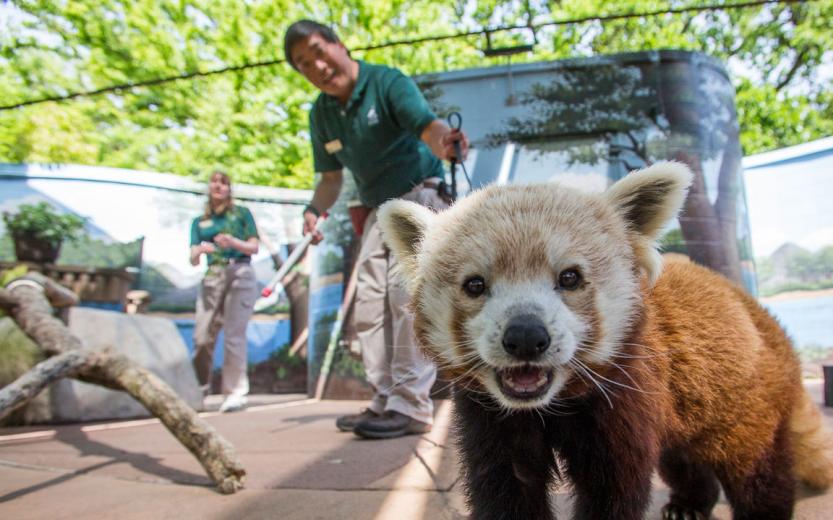
Jane the red panda is just one animal that participates in the Sacramento Zoo’s Interpretive Center, an educational program for zoo guests. The presentations include creatures from bobcats and armadillos to hawks and snakes. Aside from the Interpretive Center, visitors can also learn about the animals through daily scheduled chats with keepers and staff, and there is even an interactive session with the North American river otters wherein guests can volunteer to assist in training the animals.

“You get to see these animals in a much more intimate setting. We give a conservation message and general facts about the species,” says Education Specialist Mike Owyang. “I think it gives people a greater appreciation for the animals.” Those who want a deeper immersion can camp overnight on the lawn of the reptile house. There is an evening program with educational presentations, and in the morning guests are woken by a special alarm clock-an Australian laughing kookaburra.
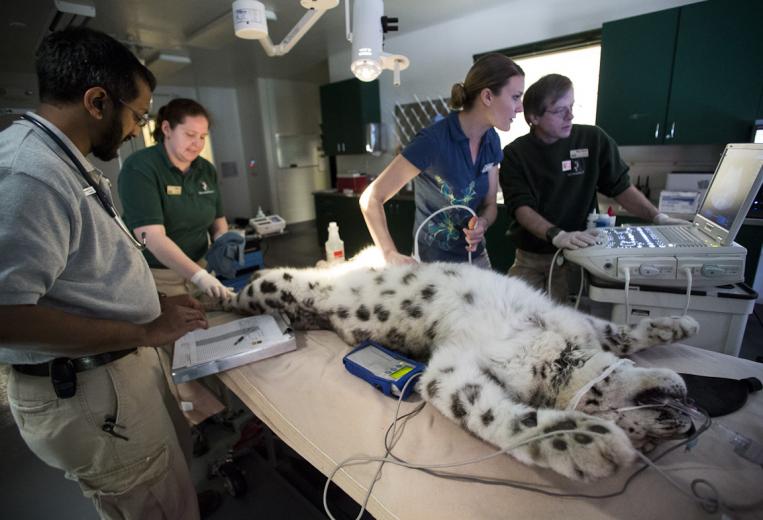
Shanti, a 19-yr-old snow leopard, has a history of urinary tract infections. During her annual exam, the veterinary staff used an ultrasound to check the health of her bladder. The zoo’s medical staff performs everything from dental screenings to surgeries. They recently brought in a python that was chronically ill and had stopped eating. She received abdominal and cardiac ultrasounds and a series of X-rays that found an abdominal blockage caused by nonviable eggs and an infection.

The veterinarians at the zoo are all employees of the University of California Davis Zoological Medicine Service, which has a long-standing relationship with the zoo. “We are faculty at the vet school, but our clinical duties are at the zoo,” says Dr. Sathya Chinnadurai (far left). “We also train the final-year vet students doing clinical rotations, and we offer zoo medicine residencies.” Participating veterinary residents spend one year at the Sacramento Zoo and two years at the San Diego Zoo.
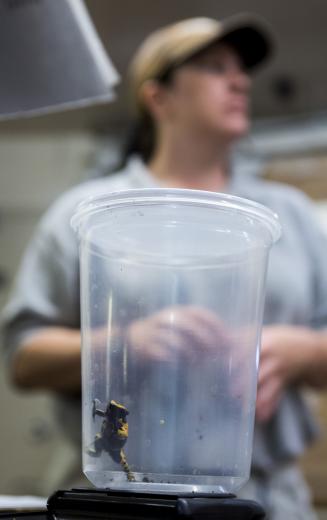
Kate Gore was managing a drug store and attending Sacramento State when she began volunteering at the Sacramento Zoo more than eight years ago. On her free time she would help wash out animal enclosures, hose down walkways and keep things generally tidy. Plus, she got lots of behind-the-scenes exposure. “Anyone over 18 can apply to volunteer; anyone willing to get down and dirty,” she says.
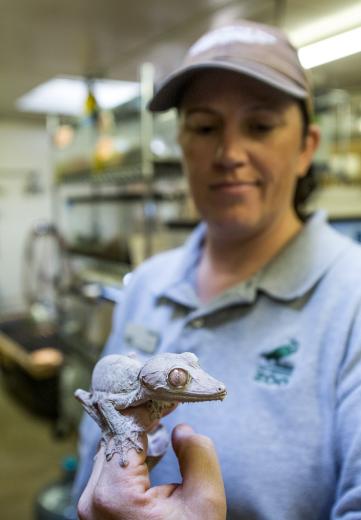
After four years assisting, she applied for a job and is now the zoo’s primary reptile keeper, responsible for the care of about 40 to 50 species of amphibians and reptiles, including dart frogs and this West African dwarf crocodile. “Most of these animals don’t move a lot; they’re ambush predators,” she says. “Knocking on the windows doesn’t help.”
A Tall Order
Snap: The Sacramento Zoo


